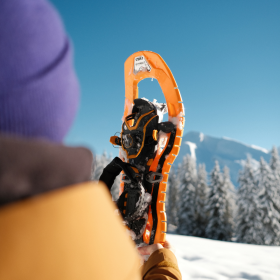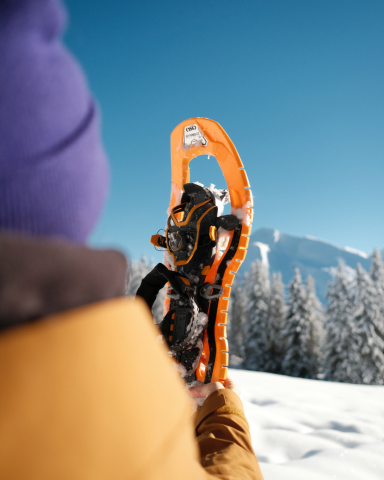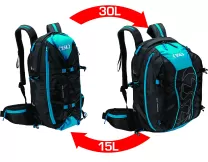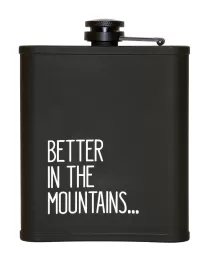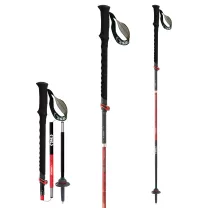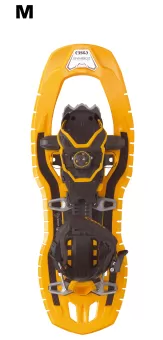
SNOWSHOEING FOR BEGINNERS : TIPS AND GUIDE
WHAT IS SNOWSHOEING?
Snowshoeing is a versatile winter activity that opens up a world of adventure in snowy landscapes. Unlike other winter sports, snowshoeing requires minimal equipment and is accessible to individuals of all skill levels and age groups. It's an activity that offers the opportunity to explore pristine winter wonderlands, stay active, and connect with nature.
One of the most appealing aspects of snowshoeing is its inclusivity. Whether you're a family looking for a fun winter outing, a fitness enthusiast seeking a challenging workout, or a nature lover eager to experience the tranquility of the winter wilderness, snowshoeing can cater to your preferences and fitness levels.
What you need to go snowshoeing :
Essential Gear for Snowshoeing :

Snowshoes
Snowshoes are the core equipment for this activity. They prevent you from sinking into the snow, making it possible to walk or run on snow-covered terrain. When it comes to snowshoes, the right choice can significantly impact your overall experience.
TSL Outdoor offers a range of high-quality models, including:
- TSL 305/325/345 ACCESS
- TSL HIGHLANDER INSTINCT
- TSL 305/325/345 ELEVATION
Each of these models is carefully designed to cater to various terrains and skill levels. The TSL 305/325/345 ACCESS, for example, is perfect for beginners with its user-friendly design. On the other hand, the TSL HIGHLANDER INSTINCT is a high-performance option, ideal for those who relish the challenge of rugged terrains and backcountry adventures. Lastly, the TSL 305/325/345 ELEVATION is an excellent choice for snowshoers of all levels, offering versatility and comfort. Selecting the right pair of snowshoes is essential to ensure that you have the right tools to conquer the winter wilderness.

Proper Clothing
Dressing appropriately is vital to stay warm and comfortable during your snowshoeing adventure. Proper clothing includes base layers, insulating layers, outer layers, and essential accessories. Base layers are your first line of defense against the cold, wicking away moisture to keep you dry. Insulating layers trap heat and provide warmth, and options like fleece jackets or down vests are excellent choices. Outer layers should be windproof and waterproof to shield you from the elements, with features like snow cuffs and ventilation. Accessories, such as insulated gloves and headgear, complete your winter outfit. Whether you're exploring groomed trails or venturing into the backcountry, dressing adequately is crucial to maintaining your comfort and safety.

Footwear
Ensure your feet stay warm and dry with suitable winter boots. Look for insulated and waterproof options designed to protect your feet from the cold and wet snow. Proper winter boots provide insulation and water resistance, keeping your feet comfortable and dry even in the most challenging winter conditions.

Poles
Snowshoeing poles are a valuable addition to your gear, providing balance and stability on snowy terrain. They are particularly useful for beginners who are still mastering their snowshoeing technique. TSL Outdoor offers a range of snowshoeing poles to suit your preferences, ensuring you have the support you need to navigate the winter landscape.

Safety Equipment/Backpacks
A well-designed backpack is essential for carrying your essentials and more. TSL Outdoor's backpacks are known for their versatility, durability, and comfort, making them an excellent choice for snowshoeing adventures. These backpacks are designed to withstand the rigors of winter and provide ample space for carrying safety equipment, extra clothing, food, and other essential items. With well-organized compartments and comfortable straps, TSL Outdoor backpacks ensure that you have everything you need within easy reach, allowing you to focus on your snowshoeing adventure without worrying about your gear.

Hydration and Nutrition
Staying hydrated is crucial during any outdoor adventure. Dehydration can set in even in cold weather, so it's essential to bring a quality hiking water bottle to ensure you have access to clean drinking water throughout your journey. TSL Outdoor offers a selection of reliable hiking water bottles, designed to withstand cold temperatures and provide easy access to hydration. Proper nutrition is also key to maintaining your energy levels during your snowshoeing excursion. Pack nutritious snacks to refuel as you go, ensuring you have the energy to explore and enjoy the winter wonderland.
CHOOSING THE RIGHT SNOWSHOES
Selecting the right snowshoes is a critical step in preparing for your snowshoeing adventure. The choice of snowshoes can significantly impact your performance, comfort, and safety. To make an informed decision, consider the following factors:
TSL Snowshoe Models:
TSL 305/325/345 ACCESS
Features and Benefits: The Access models are designed for versatility and durability, performing admirably on a variety of terrains.
Why it's Ideal for Beginners: These models are user-friendly, making them an excellent choice for beginners. Their all-terrain capabilities provide a great foundation for your snowshoeing journey.
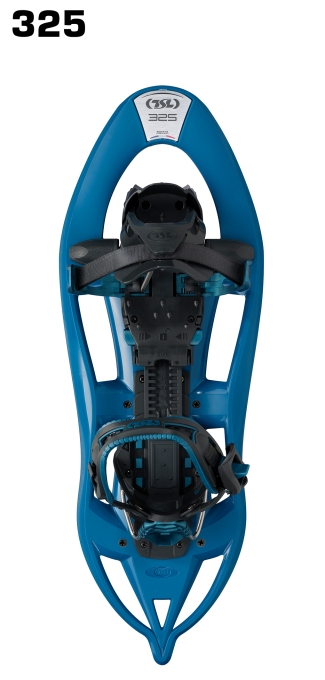
305/325/345 ACCESS

TSL HIGHLANDER INSTINCT
Features and Benefits: Highlander Instinct snowshoes are engineered for adventurers who seek challenging conditions. They offer excellent traction and stability, making them perfect for rugged terrains.
When to Consider the Highlander Instinct: If you're an experienced snowshoer looking for a high-performance model to tackle challenging trails and backcountry adventures, the Highlander Instinct is your ideal choice.
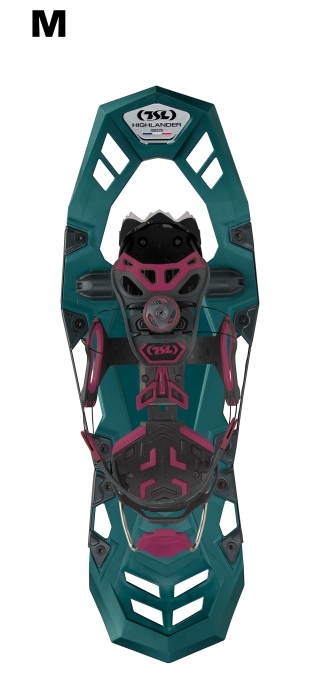
HIGHLANDER INSTINCT

TSL 305/325/345 ELEVATION
Features and Benefits: Elevation snowshoes are known for their versatility, comfort, and exceptional grip.
They perform well on various terrains, making them suitable for all skill levels.
Why Elevation is Great for All Levels: These models are a fantastic option for both beginners and experienced snowshoers who want an all-around snowshoe that can adapt to different terrains and conditions.
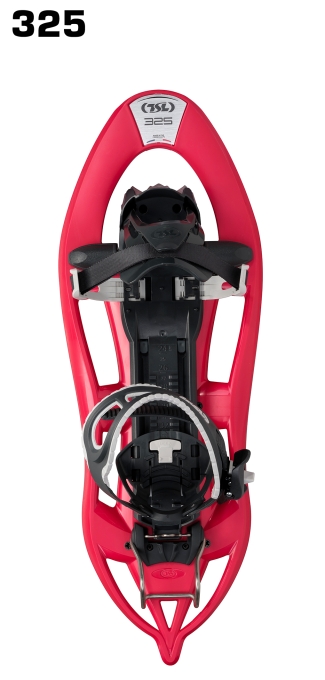
305/325/345 ELEVATION

HOW TO DRESS & PREPARE FOR A SNOWSHOEING ADVENTURE
Proper clothing is essential to keep you warm and comfortable during your snowshoeing adventure. Layering is the key to regulating your body temperature in the cold and ever-changing winter conditions. Here's an in-depth look at how to dress for snowshoeing:
Layering and Clothing Choices
Base Layers: Start with moisture-wicking base layers to keep sweat away from your skin. Look for materials like merino wool or synthetic blends that provide effective moisture management. A good base layer keeps you dry, which is crucial in cold conditions.
Insulating Layers: Insulating layers are responsible for trapping heat and providing warmth. Fleece jackets, down vests, and synthetic puffy coats are excellent choices. The insulating layer should create a thermal barrier to keep you cozy in the cold.
Outer Layers: Your outer layer should be windproof and waterproof to protect you from the elements. Invest in a quality winter jacket and pants designed for snowshoeing. These garments are typically insulated, breathable, and equipped with features like snow cuffs and ventilation options.
Accessories: To stay comfortable and protected in the winter, pay attention to accessories. Keep your hands warm with insulated gloves, and don't forget a hat and neck gaiter to shield your head and neck from the cold. Make sure your accessories are moisture-wicking and warm.
Staying Warm and Dry: In addition to layering, ensure your feet remain warm and dry. High-quality, insulated, and waterproof winter boots are essential. Consider carrying extra clothing layers in your backpack in case the weather changes unexpectedly.
By layering properly and selecting the right clothing, you can stay comfortable and safe during your snowshoeing adventure, regardless of the weather conditions.
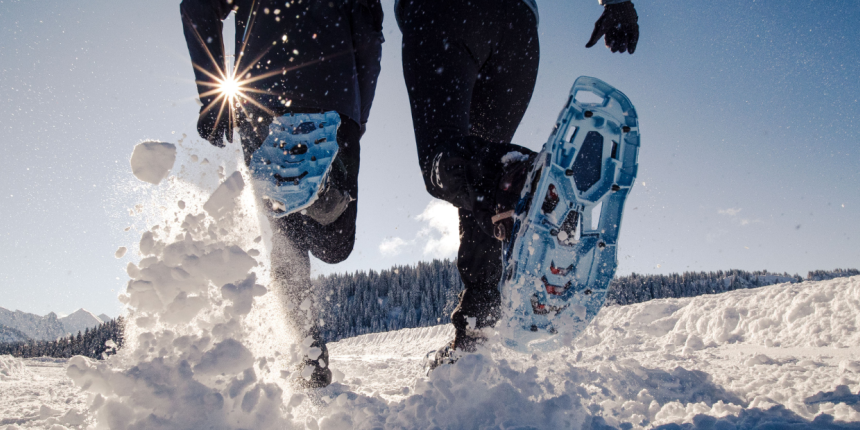
HOW TO RUN IN SNOWSHOES
For those seeking a more intense and challenging snowshoeing experience, snowshoe running is a fantastic option. Snowshoe running allows you to elevate your heart rate, build endurance, and enjoy the winter landscape at a faster pace. Here's what you need to know to get started:
Snowshoe Running Basics
- Running Form and Technique: Snowshoe running requires a slightly different form compared to traditional running. To run in snowshoes, maintain an upright posture, and keep your feet pointed straight ahead. Lift your feet higher than you would when running without snowshoes to avoid tripping over the snowshoes. Use a short and quick stride to maintain balance and avoid stumbling.
- Building Endurance: Snowshoe running can be an excellent cardio workout, especially in the crisp winter air. If you're new to this form of exercise, start with shorter runs to build endurance gradually. Be sure to stay hydrated and pack snacks to maintain energy levels during your runs.
- Snowshoe Running Tips: To ensure a successful snowshoe run, it's essential to have properly fitting snowshoes. Secure bindings are essential to prevent slipping during your run. Additionally, choose trails with packed or groomed snow whenever possible. Packed snow provides a more stable surface for running.
By incorporating snowshoe running into your winter routine, you'll discover a new way to stay active and enjoy the serene beauty of the snow-covered landscape.
FIND THE PERFECT SNOWSHOES FOR YOU
To make the most of your snowshoeing experience, consider taking a snowshoe type test. TSL Outdoor offers a handy online tool that allows you to take a test to find the perfect snowshoes for you. This test can help you identify the ideal snowshoe model based on your skill level, terrain preferences, and personal preferences.
By answering a series of questions, you can discover which snowshoe model aligns best with your unique needs and aspirations.
Find the perfect snowshoes for you.
Snowshoe Sizing
Choosing the right size of snowshoes is crucial for a comfortable and efficient snowshoeing experience. Ill-fitting snowshoes can affect your performance and may lead to discomfort. Refer to sizing recommendations from the manufacturer or retailer to ensure a proper fit based on your weight and any additional gear you might carry.
Terrain Considerations
Think about the type of terrain you plan to explore. Different snowshoe models are designed for specific terrains, from flat and groomed trails to steep and rugged backcountry routes. Choose a model that aligns with the type of terrain you'll be traversing.
User Weight and Load
The weight of the snowshoer and any additional load, such as a backpack, can influence the performance of the snowshoes. Ensure that the snowshoes you choose are rated to support your weight and any extra gear you may carry.
Bindings and Closures
Pay close attention to the binding system and closure mechanisms of the snowshoes. They should be secure and easy to adjust, ensuring a snug fit with your winter boots. Comfort and stability are key when selecting snowshoes.
With these considerations in mind, you'll be equipped to choose the perfect pair of snowshoes for your adventure. Now, let's prepare for the journey by exploring the ins and outs of proper clothing and safety measures.
Another TSL Snowshoe Model to Consider: TSL Discovery Snowshoes
- Features and Benefits: The TSL Discovery Snowshoes are designed for adventurers who seek versatility, comfort, and performance. These snowshoes boast a lightweight and robust construction, ensuring you can explore various terrains with ease. Their secure and easy-to-adjust bindings keep your feet in place, enhancing your stability and confidence on the snow. With excellent grip and floatation, these snowshoes excel in both groomed and untracked snow.
- When to Consider the Discovery Snowshoes: The Discovery Snowshoes are ideal for snowshoers who want a well-rounded and dependable option for their winter excursions. Whether you're a beginner looking for a reliable and user-friendly snowshoe or an experienced snowshoer who values a versatile model that can adapt to different terrains, mountains and conditions, the Discovery Snowshoes are an excellent choice.
- Explore the Discovery Snowshoes: Discover the full range of features and benefits of the TSL Discovery Snowshoes. These snowshoes are designed to enhance your snowshoeing experience, providing you with the tools you need to conquer diverse winter landscapes with confidence.
By considering the Discovery Snowshoes, you can broaden your options and choose the perfect snowshoe model that aligns with your unique snowshoeing preferences. With these considerations in mind, you'll be equipped to choose the perfect pair of snowshoes for your adventure. Now, let's prepare for the journey by exploring the ins and outs of proper clothing and safety measures.
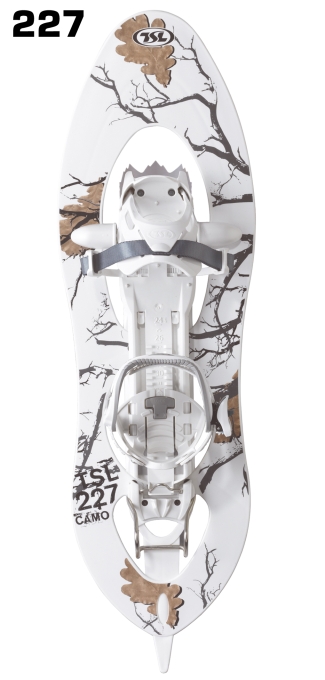
217/227 CAMO


SNOWSHOEING TECHNIQUES AND SAFETY
Before embarking on your snowshoeing adventure, it's essential to understand the basic techniques and safety considerations. Snowshoeing is a relatively simple activity, making it accessible to beginners, but it's still important to be prepared. Here are some fundamental techniques and safety tips:
Basic Snowshoeing Techniques
Walking: Snowshoeing is akin to walking, but with some adjustments. Keep your feet parallel and avoid letting the inner edges of the snowshoes touch, as this can lead to tripping. Lift your knees slightly higher than usual to prevent the snowshoes from dragging in the snow.
Uphill and Downhill: When ascending a slope, use the toe crampons for traction, leaning slightly forward to engage them. While descending, bend your knees and lean back slightly to keep your weight centered, using the heel crampons for braking.
Poles: Snowshoeing poles can provide stability and help you maintain balance, especially on uneven terrain. Use them to assist with propulsion, balance, and to probe the snow's depth when necessary.
How to Get Back Up After a Snowshoeing Fall
Falling is an inevitable part of snowshoeing, especially when navigating varied terrain. Knowing how to get up safely after a fall is essential for your confidence and well-being. Here's a comprehensive guide to handling falls and getting back on your feet:
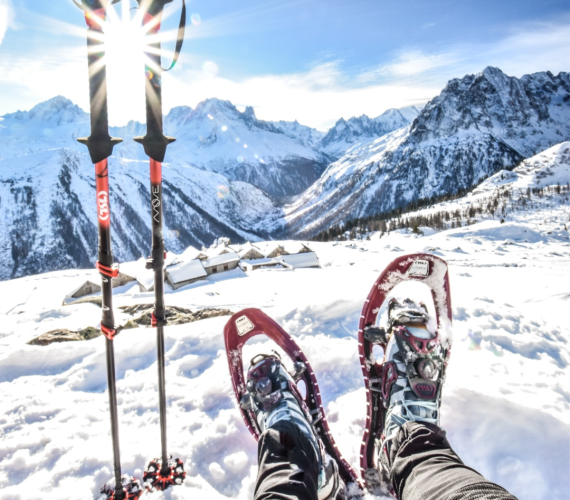
Falling Forward:
- Protect Yourself: As you start to lose balance, extend your arms and snowshoeing poles in front of you to break your fall. This prevents face-first collisions with the snow.
- Roll to the Side: After your initial impact, aim to roll onto your side. This helps to distribute the force of the fall more evenly and protects your core.
- Knees Under Body: Bend your knees to bring them under your body. This creates a stable base for pushing yourself back up.
- Push Up: Using your arms and snowshoeing poles, push yourself up. This method helps distribute your weight, making it easier to regain your footing.

Falling Backward:
- Protect Your Head: As you start to fall backward, tuck your chin to your chest to protect your head from impacting the snow.
- Sit Down: Aim to land on your padded backside rather than falling flat on your back. This reduces the impact and minimizes the risk of injury.
- Roll to the Side: Similar to a forward fall, roll onto your side to distribute the force evenly.
- Bend Knees and Push Up: Bend your knees to bring them under your body, creating a stable base. Use your arms and snowshoeing poles to push yourself up safely.
By following these techniques, you can recover from falls more easily and continue your snowshoeing journey with confidence. Falling is a natural part of the learning process, so don't be discouraged if it happens.
Snowshoeing Safety Tips
Safety should always be a top priority when venturing into the winter wilderness. The following safety precautions and best practices are essential to ensure a safe and enjoyable snowshoeing experience:
Avalanche Awareness:
If you're planning to explore areas with the potential for avalanches, it's crucial to educate yourself about avalanche safety. Here are some key considerations:
- Avalanche Beacons: Invest in avalanche beacons or transceivers. These devices are essential for locating buried individuals in the event of an avalanche.
- Shovels and Probes: Carry a sturdy avalanche shovel and probe to assist in snowpack analysis and rescue efforts.
- Avalanche Education: Consider taking an avalanche safety course to understand the risks and learn how to make informed decisions in avalanche-prone areas.

Navigation and Wayfinding:
Proper navigation is critical for a safe snowshoeing experience. Here's what you need to know:
- Map and Compass: Always carry a map and compass and know how to use them. These tools can help you find your way if you become disoriented.
- GPS Devices: Consider using GPS devices or smartphone apps designed for backcountry navigation. These can provide real-time location data and route tracking.
Weather Monitoring:
Keeping an eye on the weather is essential to stay safe in the winter wilderness. Here are some considerations:
- Pre-Trip Forecast: Check the weather forecast before heading out. Look for updated information on temperature, wind speed, and the likelihood of precipitation.
- Emergency Weather Changes: Be prepared for sudden weather changes. Winter weather can be unpredictable, so ensure you have suitable clothing and gear to cope with unexpected conditions.
Group Dynamics:
Snowshoeing with a group can enhance safety and enjoyment. Here are some group-related considerations:
- Stay Together: When snowshoeing with others, make a plan to stick together. Consistently communicate with your group to ensure everyone's safety.
- Designate a Leader: Appoint a leader who is responsible for making route decisions and ensuring everyone's safety.
Wildlife Safety:
In many snowshoeing destinations, you may encounter local wildlife. Here's how to stay safe:
- Educate Yourself: Research the wildlife in the area you plan to explore. Understanding their habits and potential risks is essential.
- Carry Deterrents: Depending on the region, consider carrying bear spray or other wildlife deterrents for added safety.
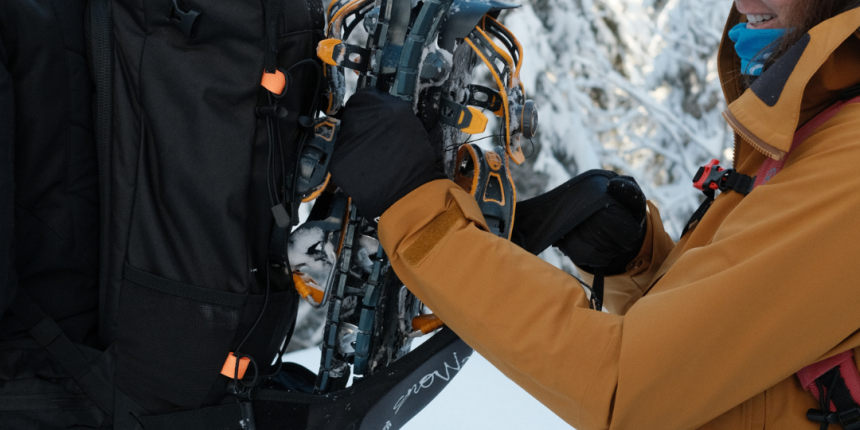
Emergency Essentials:
Always carry essential items in your backpack to ensure you're prepared for unexpected situations. These items may include:
- First-Aid Kit: A comprehensive first-aid kit can be invaluable in the event of injuries or emergencies.
- Headlamp: A headlamp provides essential illumination if your adventure extends into the evening or if you find yourself in low-light conditions.
- Extra Clothing: Pack extra clothing layers to stay warm and dry in case of wet conditions or a sudden drop in temperature.
- Food and Water: Ensure you have enough food and water to last longer than your planned trip. In case you get lost or delayed, these provisions can be a lifeline.
By following these safety precautions and best practices, you'll significantly reduce the risks associated with snowshoeing and enjoy a safer and more rewarding experience.
WRAPPING IT UP
Snowshoeing is an exhilarating winter activity that's accessible to all skill levels and age groups. It provides an excellent opportunity to explore pristine snowy landscapes, stay active, and connect with nature. Whether you're a beginner or an experienced snowshoer, proper gear, clothing, and safety practices are key to ensuring a safe and enjoyable adventure.
At TSL Outdoor, we're committed to providing high-quality snowshoes, versatile backpacks, and essential snowshoeing poles to enhance your snowshoeing journey. As you embark on this exciting winter adventure, do so with confidence, knowing that you're well-prepared to savor the wonders of snowshoeing. Enjoy the snowy trails, embrace the beauty of winter, and make memories that will last a lifetime.
